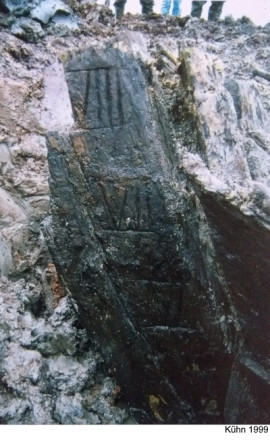History
In the tidal mudflats south of Nordmarsch-Langeness the outline of a shipwreck became visible by the frames projecting out from the sediment cover. The site was surveyed and partially excavated by Dr. Hans-Joachim Kühn (State Archaeology Department of Schleswig-Holstein) in 1997. The stem- and sternpost were unearthed, respectively, revealing draught marks up to 8 feet (bow) and 10 feet (stern). Thus, the remaining hull is preserved up to ca. 3 metres under the sediment cover. A further test-trench dug in the midship section revealed ceiling planks, a keelson and an indication for a proper keel instead of a flat-bottom.

Description
The vessel was built with oak planks in the carvel method, with an additional planking of pine, which arguably served as protection against marine borers.
Tin spoons with the Amsterdam coat-of-arms and Dutch coins were scattered in the surrounding area.
The dendrochronological analysis was carried out by Sigrid Wrobel (University of Hamburg) and yielded a date of around/after 1744.
| Length | 59 feet (18 m) |
|---|---|
| Beam | 17 feet (5.2 m) |
Status
The vessel has sunk in a former tidal creek, which silted up subsequently. This explains the excellent in situ preservation.
References
- Kühn, H.-J. (1999).
Gestrandet bei Uelvesbüll - Wrackarchäologie in Nordfriesland.
Husum.